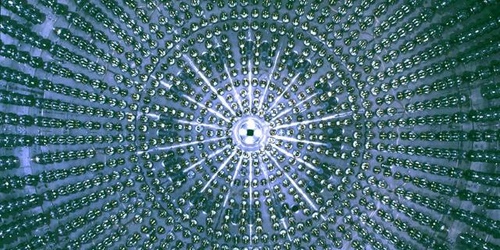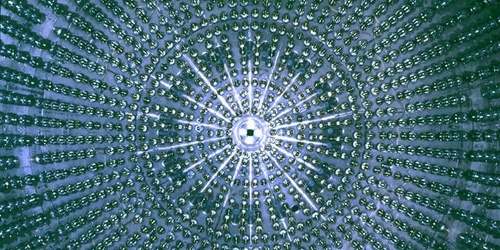Earth As a Neutrino Source
Neutrinos bombard us from all directions, including from Earth’s interior, where decays of radioactive elements, such as uranium and thorium, produce neutrinos. The Borexino experiment, located in Gran Sasso National Laboratory in Italy, has now measured a total of 53 of these “geoneutrinos,” more than doubling the project’s previous count (see 7 August 2015 Focus). The new results better pinpoint the origin of the observed geoneutrino flux, showing that roughly half of the detected particles originate from Earth’s mantle and that the rest come from the crust.
The Borexino experiment consists of an 18-m-wide sphere containing 280 tons of liquid scintillator that is surrounded by photodetectors. Incoming neutrinos can—on rare occasions—interact with a nucleus in the scintillator, producing a detectable light signal. Originally built to study solar neutrinos, the detector also serves as a geoneutrino observatory. Previous results confirmed that our planet emits about geoneutrinos per second (roughly a trillionth of the neutrinos that the Sun puts out).
For their new geoneutrino study, the Borexino Collaboration analyzed data from 2007 to 2019, utilizing improved techniques for distinguishing neutrino events from background signals caused by other particles, like muons. They also estimated the number of background neutrinos coming from nuclear reactors. From their resulting geoneutrino counts, the team calculated that the expected energy from the radioactive decays that produce the particles accounts for more than half of Earth’s total heat output (47,000 GW). This estimated heating budget favors geological models that predict—relative to other models—a high concentration of radioactive elements in the mantle.
This research is published in Physical Review D.
–Michael Schirber
Michael Schirber is a Corresponding Editor for Physics based in Lyon, France.





